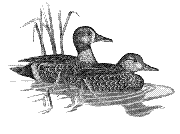US Fish & Wildlife Service
Date of this Version
January 1993
Abstract
The black brant is a sea goose that depends on coastal habitats from high arctic nesting sites in Canada, Alaska, and Russia to wintering areas in the Pacific coastal states, the Baja California peninsula, and mainland Mexico estuaries. Population estimates are based on aerial surveys in Mexico, California, Oregon, and Washington during mid-winter. Despite much annual variability in estimates, a plot of the counts from 1964 to 1992 reveals a significant downward trend in the winter populations (Fig. 1). Three of four major colonies on the Yukon&#;Kuskokwim (Y&#;K) delta declined an average of 60% during the first half of the 1980’s. This is significant because about 79% of the world population of the black brant nest in these colonies (Table). Because few other breeding colonies have been consistently monitored, we have little understanding of their dynamics.
Spring subsistence harvest in western Alaska coupled with fox predation on reduced Y&#;K delta populations, has limited the recovery of key nesting colonies. Degradation and loss of important staging and winter estuarine habitats from commercial and recreational development and disturbance are largely responsible for population reductions in British Columbia and the Pacific coastal states. In Mexico, industrial and recreational development in several estuaries may further limit winter habitats. Wildlife conservation agencies in Canada, Mexico, Russia, and the United States recently cooperated to examine population dynamics and factors that limit recovery of the black brant. This examination revealed important discoveries for management. This leaflet is a summary of these findings. More complete information on the life history of the black brant is in Bellrose (1980) and Palmer (1976).



Comments
Published in Diana H. Cross and Paul Vohs (eds.) Waterfowl Management Handbook. Fort Collins, CO: U.S. Fish and Wildlife Service, 1993. Online at http://www.nwrc.usgs.gov/wdb/pub/wmh/contents.html